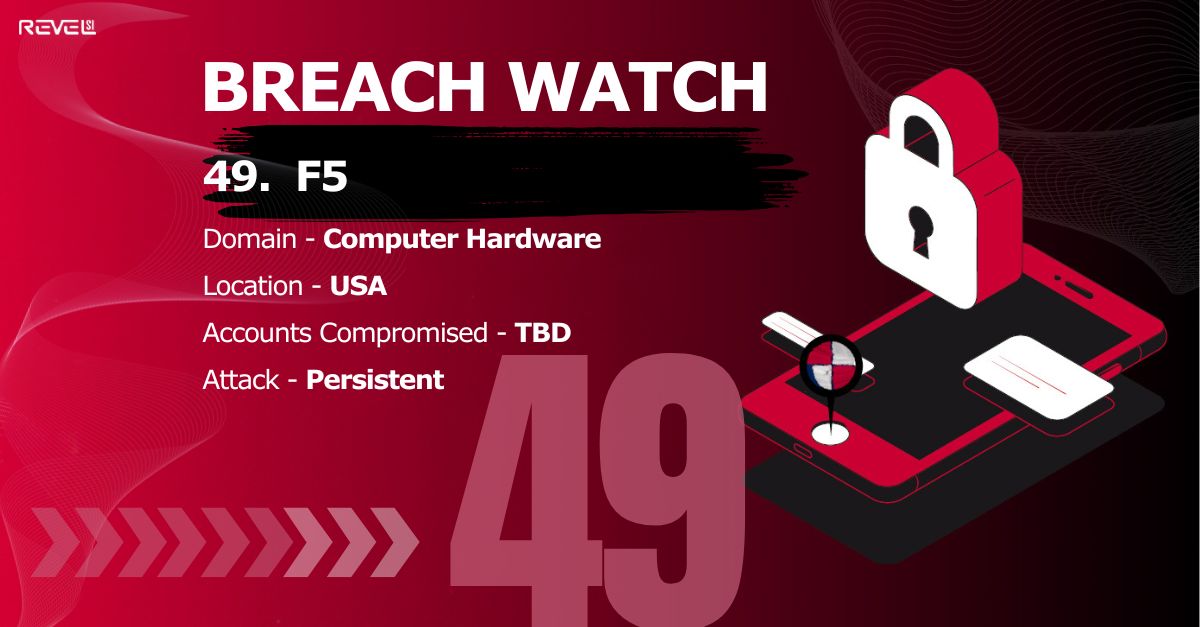F5 Breach: When the Guardians of Security Become the Target

In mid-October 2025, cybersecurity vendor F5, Inc. - a major supplier of internet infrastructure and application security systems - confirmed a sophisticated cyberattack attributed to a nation-state actor. Because F5’s technology sits at the heart of how the internet runs - balancing traffic, protecting applications, and keeping services online - this incident is a reminder that even security companies can be targeted.
Overview
F5’s products are used by banks, governments, telecoms, healthcare providers, and cloud platforms. The company disclosed that attackers accessed internal systems and stole materials related to its products. While many organizations will never touch an F5 device directly, the breach matters because it highlights how a problem at a critical vendor can ripple outward to many customers and partners.
How It Happened
According to F5, a highly skilled and persistent group obtained unauthorized access to parts of the company’s development environment. The attackers were able to move quietly for an extended period before detection. During that time, they accessed internal documentation and elements of software source code for key products such as BIG-IP - technology widely used to manage and protect online applications.
Investigators believe the threat actor focused on collecting information rather than causing immediate disruption. That information may include details about vulnerabilities the company was working to fix. Authorities urged organizations using F5 devices to review their configurations, apply updates, and ensure management interfaces are not exposed to the public internet.
Risks
The risks extend beyond F5. Because its technology is central to how websites and applications are delivered securely, any stolen knowledge about how those systems work could help attackers design more precise attacks later.
There are two main concerns. First, knowledge risk: access to parts of the source code or vulnerability details could make it easier to discover new weaknesses. Second, trust risk: a breach at a key vendor shakes confidence across the industry and shows how interconnected the digital world is - one weak link can affect many.
There has been no confirmed public evidence that attackers altered F5’s software delivered to customers, and the company has not reported widespread customer data exposure. Still, the stolen information could be valuable to adversaries in the future.
Recommendations
1. Keep systems updated. Install security updates as soon as they are available. Delays give attackers a larger window of opportunity.
2. Know your vendors. Ask service providers and hosting partners whether they use F5 equipment and what steps they have taken in response to the incident.
3. Limit exposure. Never expose device management panels to the public internet. Use strong authentication (including multi-factor) for any administrative access.
4. Prepare for incidents. Have a simple, written plan for who to call, how to isolate systems, and how to communicate with customers if something goes wrong.
5. Stay informed. Follow updates from trusted cybersecurity sources and your national CERT. Awareness can provide early warning.
Conclusion
When a company like F5 gets breached, it’s not just another headline - it’s a paradox that cuts to the heart of digital trust. The people who build the locks suddenly find themselves on the wrong side of the door.
But maybe that’s the real lesson here: cybersecurity isn’t about being invincible; it’s about being prepared to fail gracefully. Every system, every defense, every policy has a breaking point. What defines resilience isn’t the absence of breaches - it’s how fast you notice, how well you respond, and how honestly you communicate when things go wrong.
The F5 incident reminds us that the internet isn’t protected by walls - it’s protected by people. And people, whether in a global enterprise or a ten-person office, share the same responsibility: stay vigilant, stay curious, and stay humble enough to know that security is never finished.
